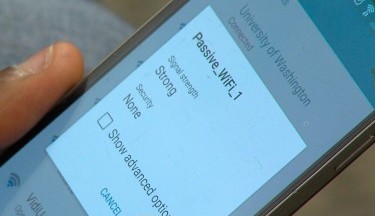Wi-Fi with 10,000 times less power
March 01, 2016
on
on

You see Wi-Fi everywhere now: at home, in the office and in the city. That lets you connect your smartphone to all sorts of other devices – desktop and laptop PCs, tablets, printers and much more – without having to use a mobile phone network. Unfortunately, Wi-Fi links consume a lot of power.
A team of engineers at the University of Washington (USA) have now developed a system that allows Wi-Fi connections to be made with 10,000 times less power than required with conventional networks. The passive Wi-Fi system even uses 1,000 less power than low-power communication systems such as Bluetooth Low Energy and ZigBee.
In the new approach the analog and digital functions are separated from each other, because the analog portion consumes a lot of energy. The power-hungry analog functions are relocated to a different device on the network, which draws power from the AC line. Using digital switches, an array of sensors generates Wi-Fi data packets with very low power. In their experiments the engineers were able to communicate over distances up to 30 m with data rates up to 11 Mbit/s.
A team of engineers at the University of Washington (USA) have now developed a system that allows Wi-Fi connections to be made with 10,000 times less power than required with conventional networks. The passive Wi-Fi system even uses 1,000 less power than low-power communication systems such as Bluetooth Low Energy and ZigBee.
In the new approach the analog and digital functions are separated from each other, because the analog portion consumes a lot of energy. The power-hungry analog functions are relocated to a different device on the network, which draws power from the AC line. Using digital switches, an array of sensors generates Wi-Fi data packets with very low power. In their experiments the engineers were able to communicate over distances up to 30 m with data rates up to 11 Mbit/s.
Read full article
Hide full article


Discussion (0 comments)